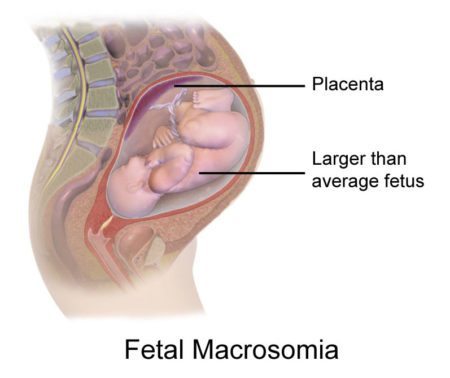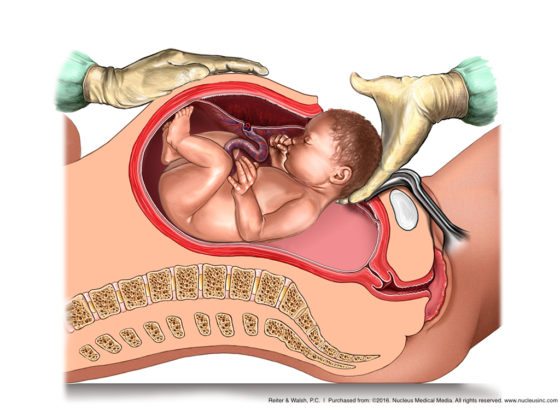Michigan Hypoxic Ischemic Encephalopathy (HIE) Lawyers | $14.6 Million for Child with HIE and Cerebral Palsy caused by Delayed C-Section
$14.6 Million for Child with HIE and Cerebral Palsy caused by Delayed C-Section | Michigan Hypoxic Ischemic Encephalopathy (HIE) Lawyers
Defendants settled with the baby and family for $3.9 million (total annuity payout: $14.6 million).
 A baby born in a Michigan hospital has HIE (hypoxic ischemic encephalopathy), permanent brain damage and cerebral palsy as a result of the hospital’s negligence. The mother was treated prenatally by the hospital’s clinic, where she received full prenatal care and was a compliant patient. When the baby was 25 weeks gestational age, the mother was diagnosed with genital herpes, an infection which, if left untreated, can travel to the baby during birth and cause brain injury. The mother received medication for herpes, and when the baby was 29 weeks of gestational age, the mother was diagnosed with gestational diabetes.
A baby born in a Michigan hospital has HIE (hypoxic ischemic encephalopathy), permanent brain damage and cerebral palsy as a result of the hospital’s negligence. The mother was treated prenatally by the hospital’s clinic, where she received full prenatal care and was a compliant patient. When the baby was 25 weeks gestational age, the mother was diagnosed with genital herpes, an infection which, if left untreated, can travel to the baby during birth and cause brain injury. The mother received medication for herpes, and when the baby was 29 weeks of gestational age, the mother was diagnosed with gestational diabetes.
The abnormally high glucose produced as a result of this condition can cause complications in the baby, such as the baby becoming macrosomic (large), which can cause the delivery to be difficult. The diabetes was treated with dietary restrictions. At 38 weeks gestational age, the mother reported scabies contact, presenting to a prenatal care appointment with a rash on her abdomen, hands and feet. Scabies is a very itchy and contagious condition caused by infestation in the skin of mites and and an infection caused by mite proteins.
The age of the baby was in question by about a week due to different ultrasounds that showed different ages. One of the ultrasounds was signed and consistent with the mother’s last missed period. Due to the mother’s gestational diabetes, the plan was to induce labor between 39 and 40 weeks gestation, according to the testimony of the resident. Reiter alleged that the physicians failed to address the two different ultrasound ages when considering the time to deliver.
 Reiter further alleged that the fetus wasn’t able to tolerate labor and the mother thus needed a C-section. Meconium was found in the amniotic fluid when the membranes ruptured, suggesting fetal distress. Nonreassuring heart tracings were present near the end of labor and indeed, the fetal heart monitor showed that the baby was in distress. At this point, an emergency C-section was finally performed.
Reiter further alleged that the fetus wasn’t able to tolerate labor and the mother thus needed a C-section. Meconium was found in the amniotic fluid when the membranes ruptured, suggesting fetal distress. Nonreassuring heart tracings were present near the end of labor and indeed, the fetal heart monitor showed that the baby was in distress. At this point, an emergency C-section was finally performed.
The baby was born with a slow heart rate, wasn’t breathing at 1 minute of age, and needed to be resuscitated. At five minutes of age, the baby was doing better and had an Apgar score of 9, which is good. For the first 4 hours of life, she had normal activity. At 4 hours, however, the baby started to experience seizure activity.
Umbilical cord blood gases were in the normal range. Umbilical cord blood is blood drawn from the baby’s cord at birth. If the blood is acidic and has a high carbon dioxide level, this is an indication that the baby was not oxygenating very well. Head imaging was abnormal and consistent with herpes infection or an oxygen depriving event, called hypoxic ischemic encephalopathy (HIE). HIE and infections that travel to a baby’s brain both can cause cerebral palsy. The baby was later diagnosed with cerebral palsy, speech deficits, and motor deficits.
Reiter asserted that the standard of practice required delivery for a mother with gestational diabetes to occur between 39 and 40 weeks of gestation. Reiter further argued that the fetal monitor tracing from the mother’s labor showed nonreassuring fetal heart tones and excessive uterine stimulation, which required earlier delivery of the baby.
 In addition, Reiter argued that the resident managing the labor failed to warn the attending physician that the baby was in distress, and therefore, a timely C-section was not performed. This delay caused oxygen deprivation in the baby, which caused brain damage, Reiter asserted.
In addition, Reiter argued that the resident managing the labor failed to warn the attending physician that the baby was in distress, and therefore, a timely C-section was not performed. This delay caused oxygen deprivation in the baby, which caused brain damage, Reiter asserted.
The defendants’ position was that the baby, although slightly depressed at birth, was fine by five minutes of age, had normal umbilical cord gases and normal neurological findings during the first few hours of life, all of which demonstrated a pre-existing injury and absence of a hypoxic ischemic event during labor. Defendants further claimed that the baby’s injuries were caused by maternal infection, and they claimed that the head imaging was consistent with a viral infection and not a hypoxic ischemic event.
About ABC Law Centers
- Our Firm’s Values, Experience and Results
- Our Attorneys
- Our Medical Staff
- Working with ABC Law Centers
- Testimonials
- Community Involvement
About Our Verdicts and Settlements Calculations
The smaller sum we list on our site is the total value of the settlement or verdict. The larger sum is the total value of the settlement or verdict plus the expected lifetime yield of an annuity purchased with a portion of the settlement or verdict. This larger sum is the maximum value, because it takes into account the lifetime expected value of the annuity.